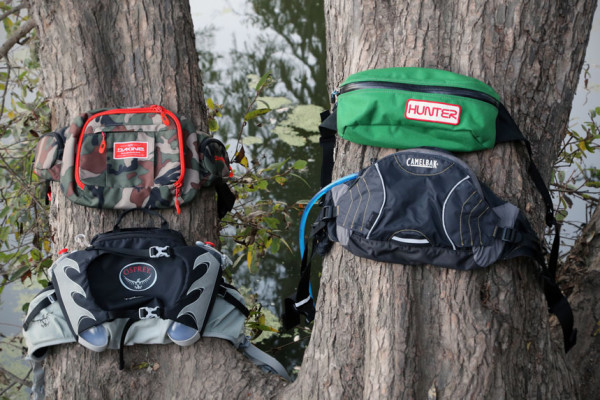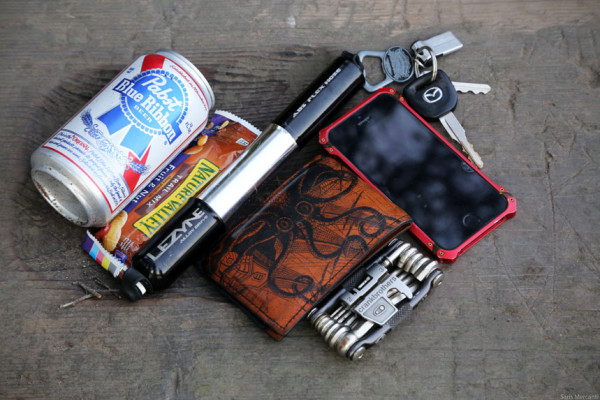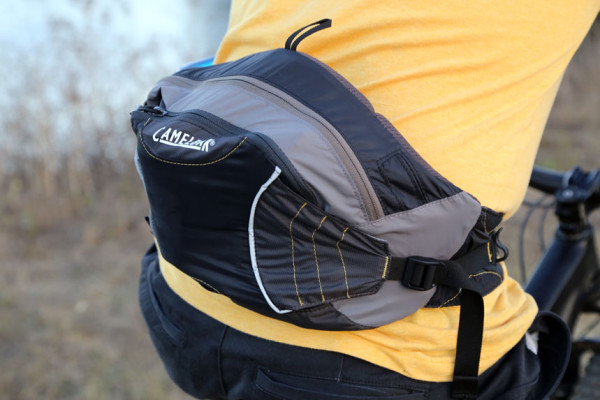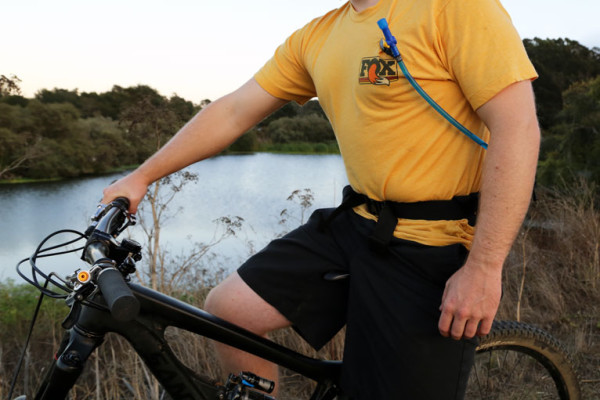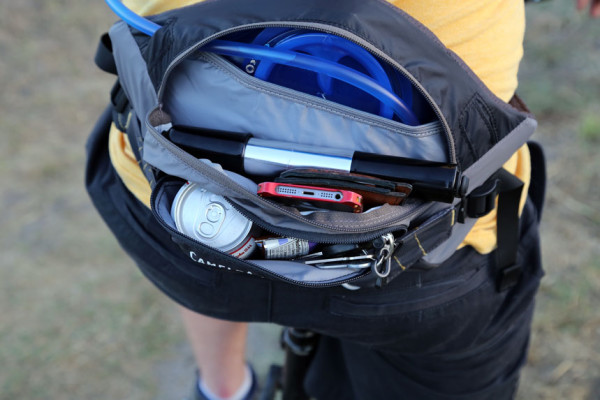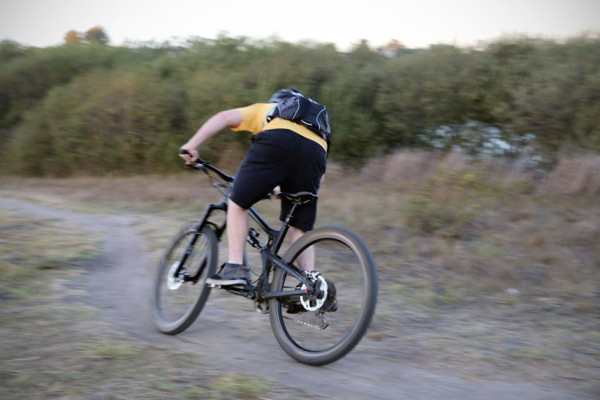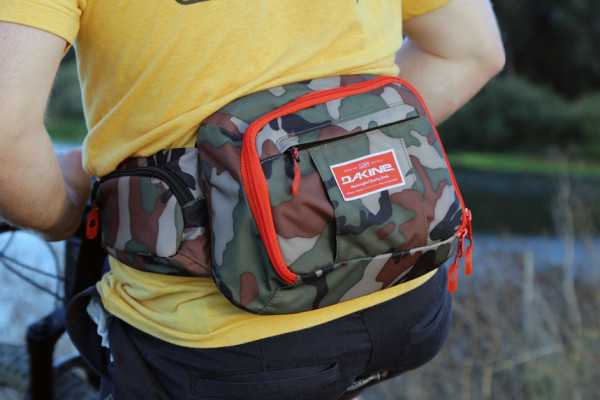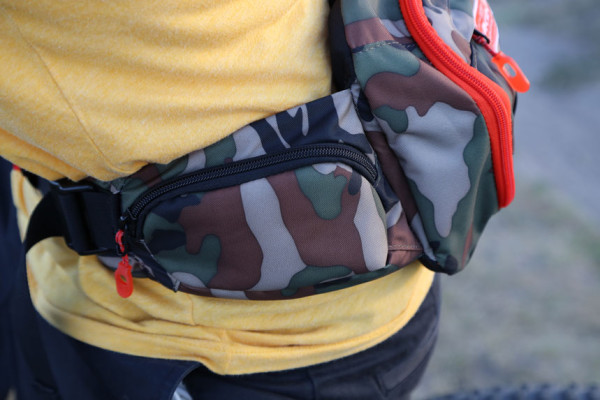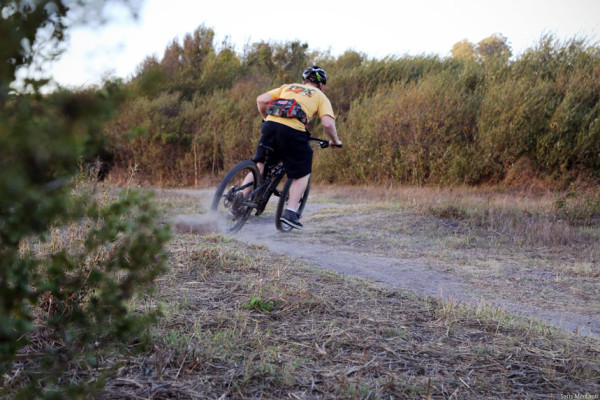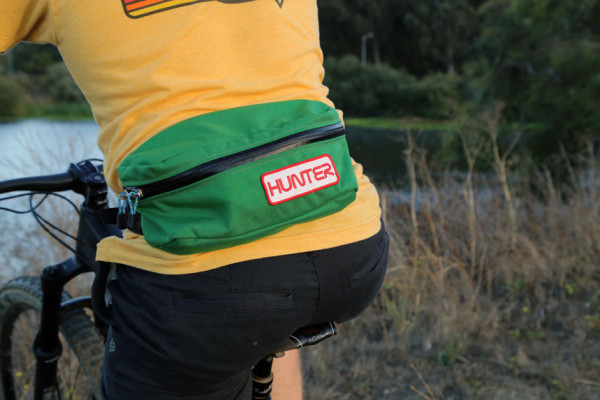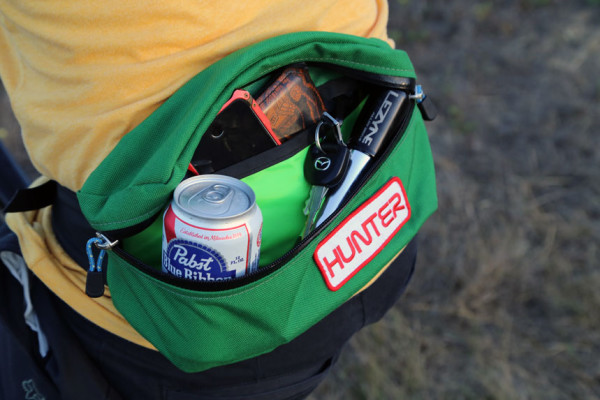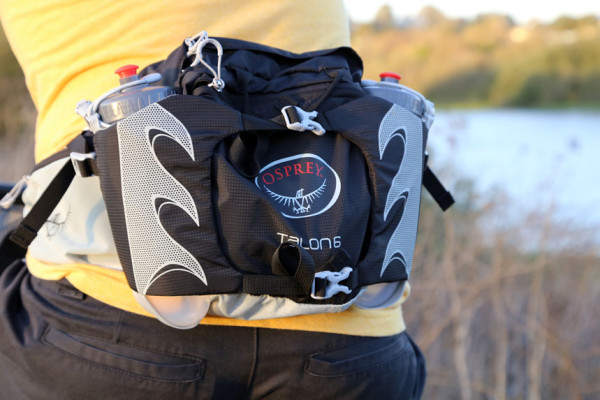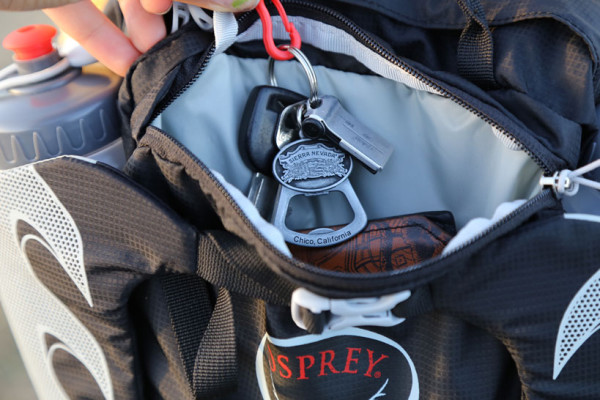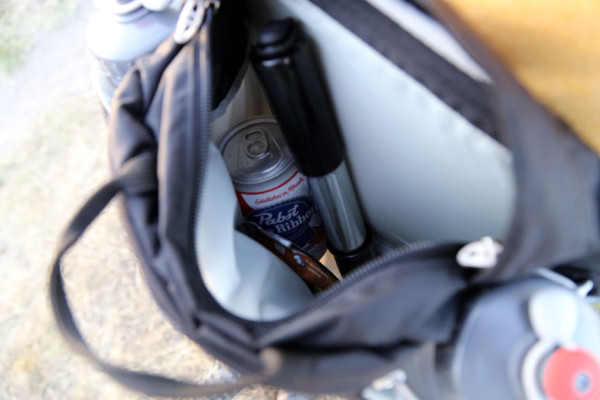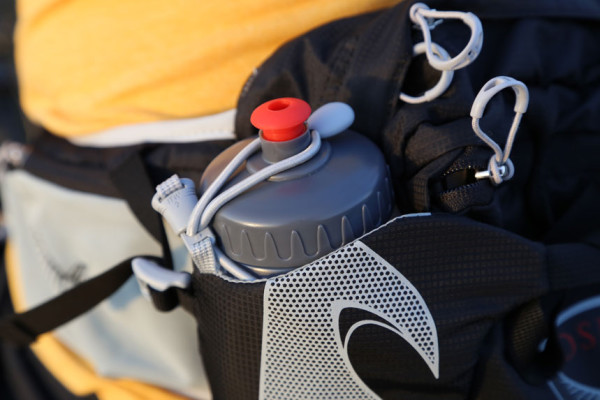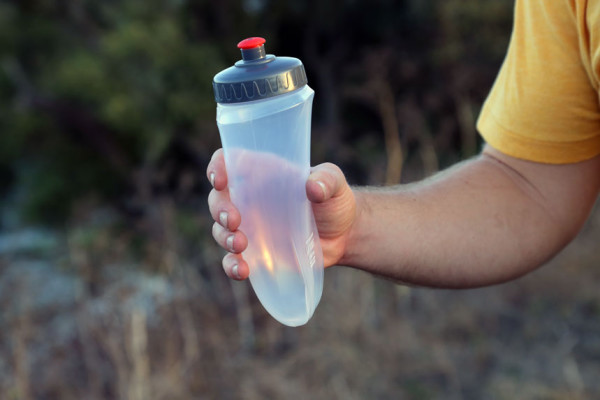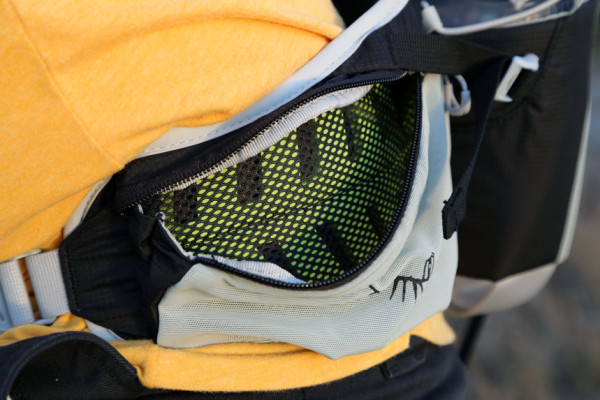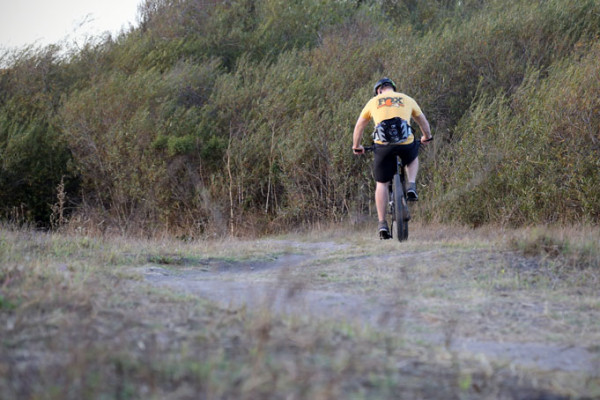Fanny packs. If enduro wasn’t already the lamest marketing trend since 27.5″ wheels, the ass backwards 80’s fanny pack has suddenly reared its ugly head in some misguided sort of pseudo euro fashion statement. Damn it.
I absolutely adore my hydration pack in the way that one can only love an inanimate object they’ve carried for innumerable hours. That trusty bag has served as a makeshift pillow, hangover companion, beer tote, and trail buddy for years, yet now some reformed downhillers with moto envy have decided they’re uncool, so it’s suddenly time to trade that relationship in for a water bottle, some electrical tape, and a nylon murse.
Yet it’s our duty to report on the latest and greatest coming and goings of the industry, so since Tyler is a roadie, and Zach only rides fat bikes, I was somehow conned (I suspect alcohol may have been involved) into running an enduro bro fanny pack battle off. Yay me.
So, do you even enduro, bro?
Requirements
For our test, I compiled several common items which your typical enduro rider probably carries:
- A fancy smartphone for ‘grammin/Strava
- Crap can of beer (or a flask of whiskey for the glutards)
- Keys (w/bottle opener)
- Wallet for that post ride trip to the local brew pub
- Multitool
- Minipump
- Snacks
I would have included an inner tube/tire levers, but most enduro riders prefer to electrical tape (or velcro if they’re classy) those items to their frames.
Camelbak Flash Flo LR
First up is the FlashFlo LR from Camelbak, which retails for $57. This pack is designed for hiking and is the only one in our test that integrates a hydration bladder. There is one main cinch for the waist, while a secondary set of straps allow you to further compress the bag for improved stabilization.
The hose routes up from the bag and clips onto your shirt.
On their website, Camelbak states the FlashFlo was designed to carry a trail map, some snacks, a phone, wallet, and keys. I shoved a whole lot more than that into the two small compartments. The main compartment is shared with a 1.5 L hydration reservoir, while the smaller outer pocket has two internal mesh dividers, and a key ring.
This was the bag I was easily the most excited about because of the hydration bladder integration. Many of the enduro bikes we review here at Bikerumor do not have a convenient spot for a water bottle cage, so this fanny pack seemed to offer the holy grail of usability and enduro trail cred.
Unfortunately when overstuffed, the fanny pack had a tendency to fold over on itself. The only way to resolve the issue was by simply packing less. This is understandable, considering it was designed for carrying a few small items while hiking.
If your frame doesn’t have water bottle mounts or you simply need to carry more water on your trail riders, you might as well just strap those tools onto your frame (via something like the Specialized SWAT system), and get your enduro on with the FlashFlo.
Dakine
The Dakine Enduro Hip Pack bears a strong resemblance to the heavily compartmentalized units favored by moto trail riders.
The interior has three mesh internal organizers, a velcro strap for keys (or to hold your pump), and a small zippered stash pocket on the exterior.
There are two additional pockets on the waist strap, which can easily accommodate most trail snacks, a cellphone, etc…
The Dakine bag easily offered the most usable storage of any of the fanny packs in our review. It was also the best compartmentalized. There is spot for everything, although I often struggled to find things to fill it with. In addition to the items listed above as “required” riding goods, it could accommodate a compact jacket, another beer, or even a 12 oz water bottle. Possible bonus points for being camo.
The one downside is that it’s nearly as large as some of the smaller hydration pack offerings on the market. Despite it’s size, when cinched just right, the bag stayed in place with minimal bouncing. Overall, I’d say this $50 Dakine bag is best suited for pack rats, or those on backcountry adventures who need to carry a wide assortment of kit.
Hunter
The Hunter pack was designed by renown custom frame builder Rick Hunter, and handmade in Canada by Scott Felter – the man behind custom bike pack manufacturer Porcelain Rocket. As you’d expect from that introduction, it’s made from premium materials, with premium attention to detail, and has a premium price.
The pouch has a central compartment, a smaller sleeve that’s slim enough for your phone or wallet, and a key ring. While it is the smallest bag of the group, the pack is capable of holding four 12oz cans. More practically, it was capable of holding all the essentials, plus a compact jacket. Because of the lack of internal dividers, the added benefit of stuffing a jacket in the bag was that it prevented items from jostling around.
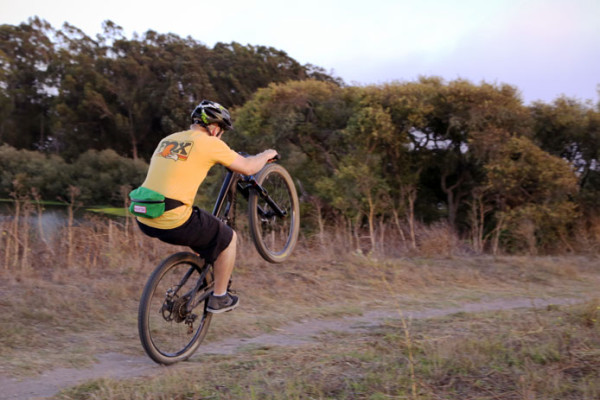
At $75, the Hunter bag is not cheap. It also lacks the dizzying array of internal mesh pockets and fancy ventilated back panels of the other competitors, but it’s easily the highest quality. It’s also the perfect size. Unlike the other packs, some of which were designed with hiking or running in mind, the Hunter didn’t feel like a mini backpack. It was a no-nonsense bag with just the right amount of room. Plus it looks classy.
Osprey Talon 6
There are two small pockets made of fine mesh. They’re not ideal for anything you’re afraid might poke through, but are very light weight. The entire pack is backed by a well ventilated mesh and foam liner.
The Talon 6 (which is also available in a female specific version called the Tempest) was the most versatile pack in our roundup. With it’s highly breathable back and side panels, huge storage capacity, and water integration, the Osprey bag was the best suited for carrying all the essentials needed for a 4-5 stage enduro race.
The bag was on the larger side, but its breathability and excellent fit made it one of the most comfortable. All of these features comes at a price. The Osprey retails for $69.99, which is the second highest in our test.
Verdict
So before I crown a victor, let me put this out there – I am not entirely sold on the fanny pack. Maybe I’ll be completely alone on this, but hydration bags are just so damn convenient. Why spend time awkwardly fumbling around for a water bottle when you can run a spigot straight to your face? Hell, I stay better hydrated when I wear a bag because it’s so much easier and I’m not worried about running out of water. Not to mention that I don’t have to worry about salmonella because maybe my carbon wonder bike only has one water cage, and it’s located in the most inaccessible place imaginable.
But back on point, fanny packs can be cool, I guess. For all around versatility, the Osprey Talon is the obvious winner. Despite its questionable looks, it did the best job meshing hydration, storage, beer portage, and breathability.
At the end of the day though, the one fanny pack I actually want to wear is the Hunter. While all of the other bags were so big they left me wondering why the hell I left my backpack at home, the little Hunter bag felt just right. With just enough room for beers, a compact riding jacket, my phone, a wallet, and a miscellaneous item or two, I actually found myself (to my eternal shame) wearing it all the time on short rides or around town. No, it hasn’t replaced my Camelbak on enduro rides, but now I certainly understand what enduro bros keep raving about in those online forums.
